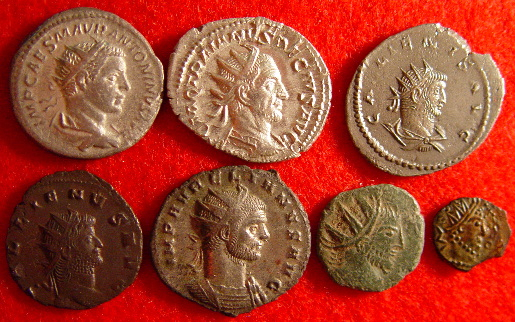
Two metal detector enthusiasts unearthed more than three thousands of Roman copper alloy coins from the early 4th Century AD near the village of Rauceby, in England after searching the area for years.
The hoard, which consists of Roman copper coins, is currently being examined by the British Museum. Experts claimed that this collection has significant global importance.
On Thursday, May 9 these coins were declared 'treasure' at Lincoln Coroner's Court under the Treasure Act 1996.
The 59-year-old Rob Jones, an engineering teacher from Lincoln and his 32-year-old friend, Craig Paul, a planner from Woodhall Spa made this discovery in July 2017.
As reported by Sleaford Standard, Rob said that they used metal detectors to search the areas and when it started making signal noises, the enthusiasts dug deeper to find these copper alloy coins.
"When you discover something like this, the last time someone touched it was nearly 2,000-years-ago! I was completely flabbergasted!" Rob said.
Excavation using metal detectors
Further research on this site was carried out by Rob's friend Craig, Sam Bromage from the University of Sheffield and Dr Adam Daubney, an archaeologist at Lincolnshire County Council. During the investigation, another hoard of 10 coins was found from the same area. The other explorer, Craig said that it was an amazing feeling to join the excavation team and witness the finding of another hoard of ancient coins.
After the excavation, Dr Daubney clarified that these coins were found from a ceramic pot, which was buried "in the centre of a large oval pit, lined with quarried limestone." In addition, he said that it didn't look like the hoard was put in the ground in secret. As per the expert, it could be a ceremonial or votive offering.
While talking about the hoard found in Rauceby, he believes that it "is giving us further evidence for so-called 'ritual' hoarding in Roman Britain."
The Curator of Iron Age and Roman Coin Hoards at the British Museum, Eleanor Ghey has given some background details on the Roman dominance in Britain after the death of the emperor Constantius in York. During that period "Roman coins had begun to be minted in London for the first time," he noted.
Since the discovery is the largest fully recorded find to this date from Britain, "it has great importance for the study of this coinage and the archaeology of Lincolnshire," Ghey said.
Paul Cope-Faulkner Archaeology Senior Manager at Heritage Lincolnshire stated that this finding will help to discover the importance of the area around Sleaford during the closing days of the Roman Empire, which started with the coronation of Augustus Caesar as the first emperor.
Carbon -14 Dating of Ancient Ice layers
As per the historians, the Roman Empire was the most extensive political and social structure in western civilization. In a recent revelation, the deepest layers of carbon-14 dated ice found in the Col du Dôme of the Mont Blanc glacier in the French Alps provided a record of atmospheric conditions in the ancient Roman era.
Published in Geophysical Research Letters, the study revealed significant atmospheric pollution from heavy metals with the presence of lead and antimony, which is linked to mining activity and lead and silver production by the ancient Romans.
The Alpine record traces the major periods of prosperity in Roman antiquity as they extracted lead ore (containing silver) to produce the lead needed to make plumbing and silver for coins.
The silver was extracted from the lead by heating the ore to a temperature of 1200°C, releasing significant amounts of lead into the atmosphere, which was captured by the first-ever study of Ancient-era pollution using Alpine ice recently.









